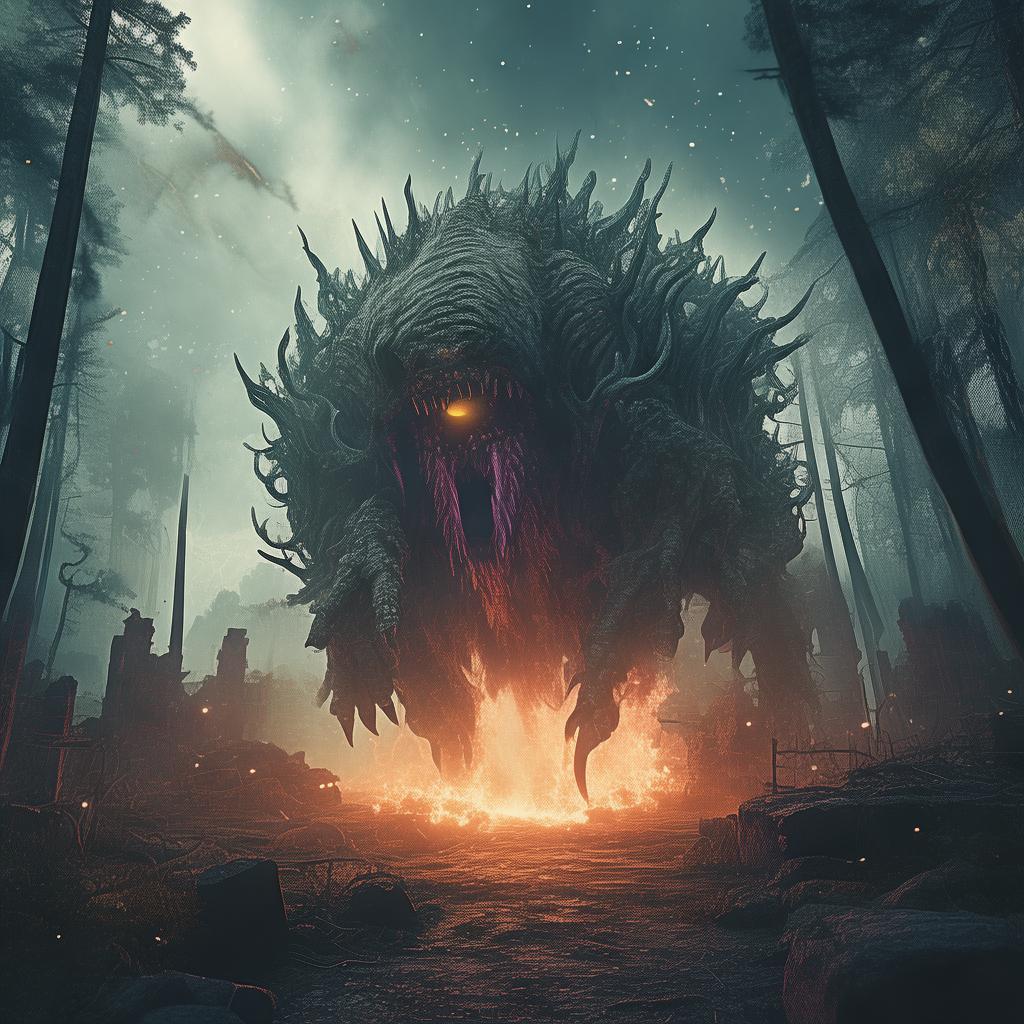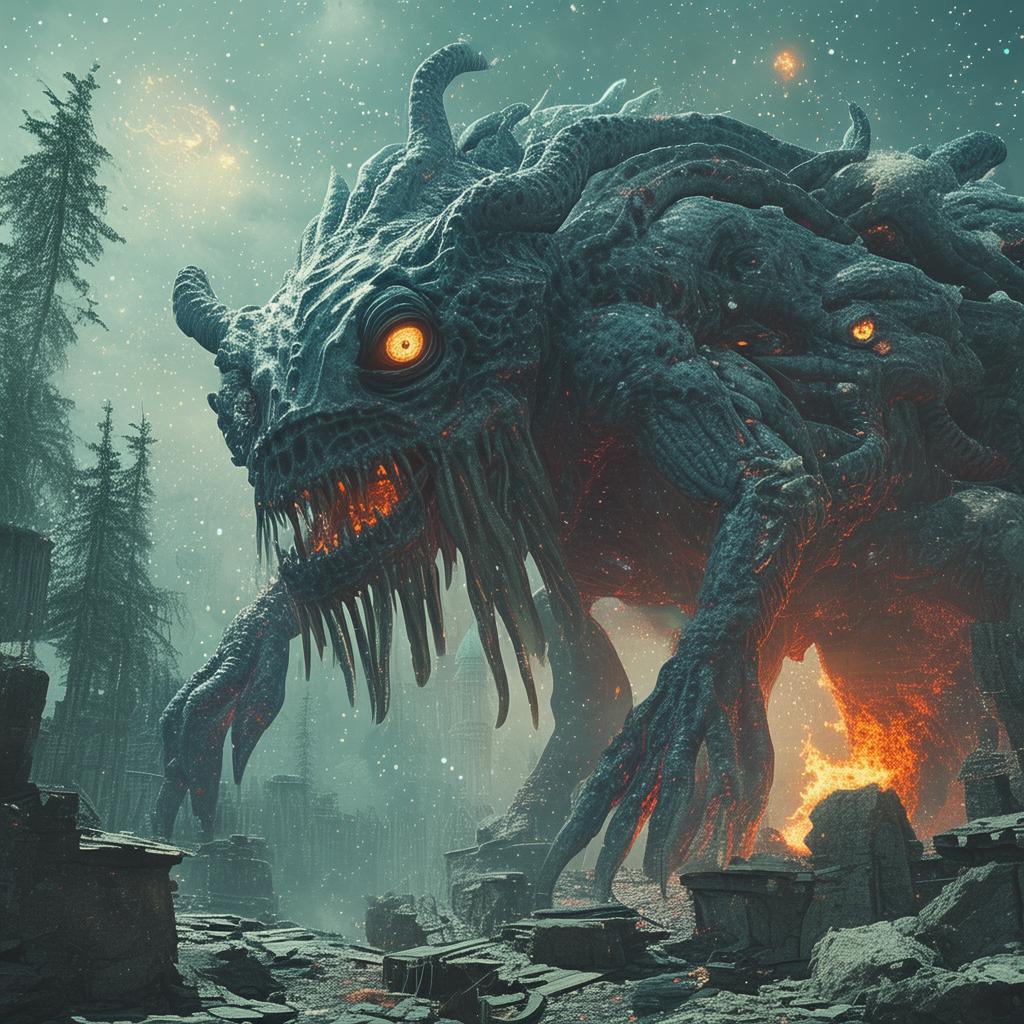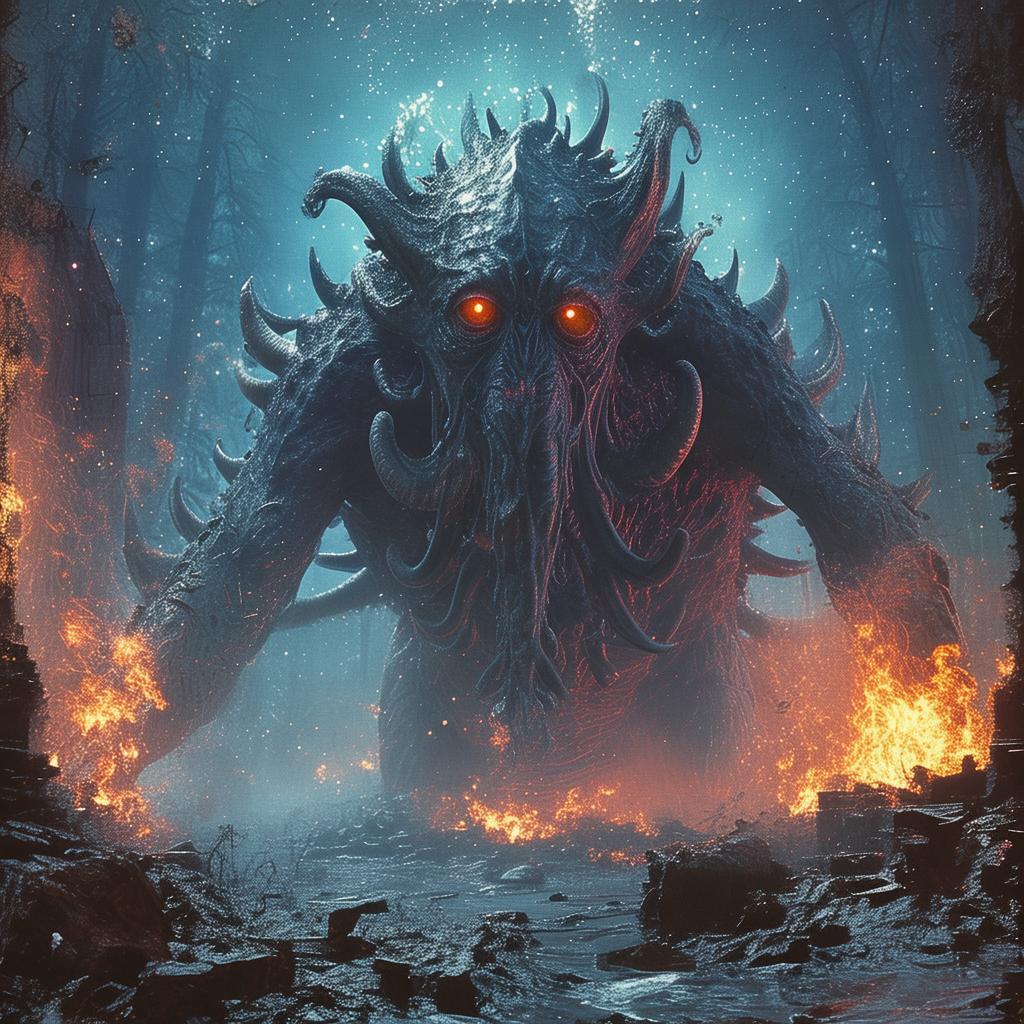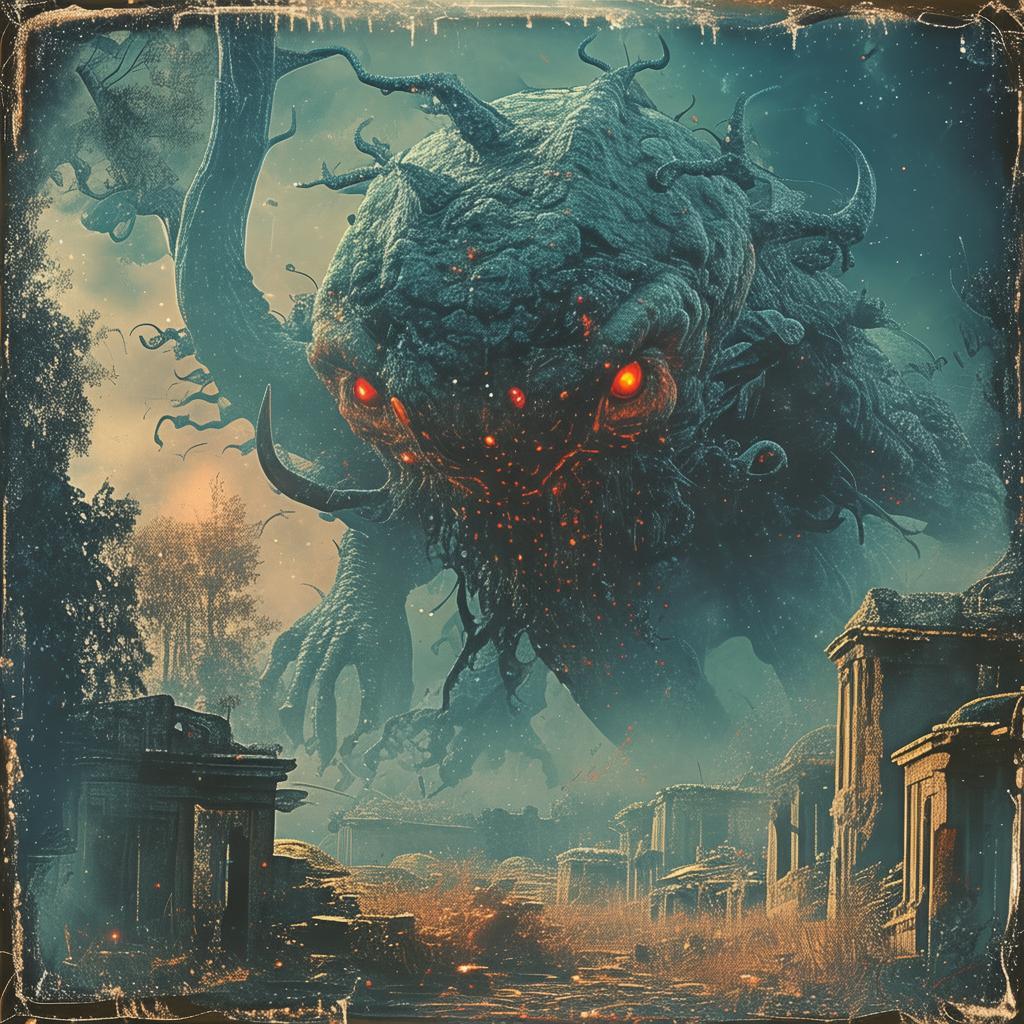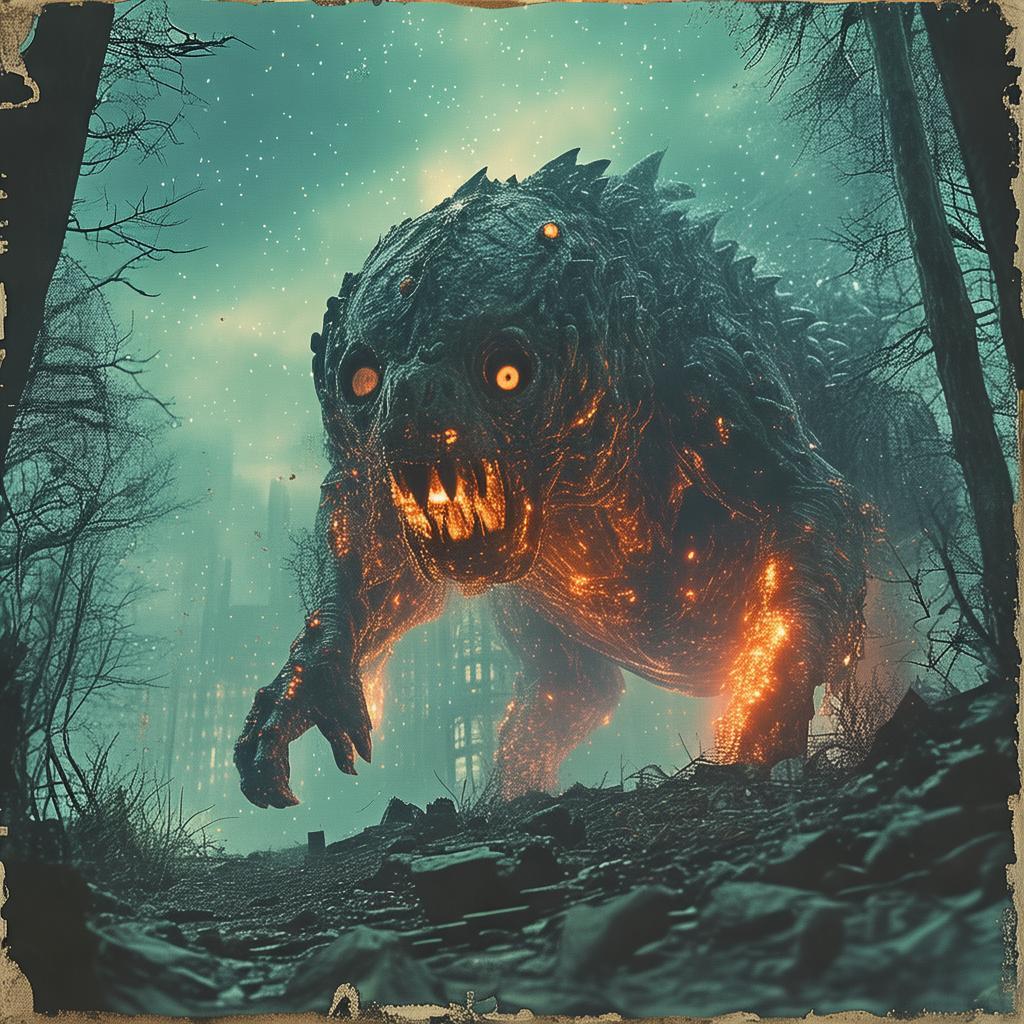The Cult of the Abyss: The Final Revelation
The city of R'lyeh was a place shrouded in myth and mystery, its name whispered in hushed tones by those who dared to speak of the forbidden. The director, known only as Voss, had spent years crafting a film that would bring the dread of the ancient cult to life on the silver screen. His latest project, "The Cult of the Abyss," was to be his magnum opus, a cinematic tour de force that would delve into the heart of the Cthulhu Mythos.
Voss was a man of many contradictions. On one hand, he was a revered filmmaker with a penchant for the macabre, his films often leaving audiences haunted and disturbed. On the other, he was a man who sought to understand the dark forces that lurked just beyond the veil of human understanding. It was this quest for knowledge that had led him to the cult of the Abyss.
The film's script was a labyrinth of intrigue and horror, weaving together the legends of Cthulhu and his followers, the Deep Ones, and the Outer Gods. Voss had spent countless hours researching, interviewing scholars, and even consulting with those who claimed to have seen the creatures of the abyss with their own eyes. The result was a script that was both chilling and compelling, a narrative that would push the boundaries of horror.
The casting was completed, and the crew was assembled. Voss had chosen a location that was said to be the very gateway to the abyss—a desolate island off the coast of Maine. The crew arrived, their spirits high, ready to begin the filming. But as they set up their equipment, they couldn't shake the feeling that they were being watched.

The first night on the island was filled with tension. The actors were given their lines, and the crew prepared to capture the opening scenes. As the sun dipped below the horizon, casting a long, eerie shadow over the island, the crew felt the weight of the unknown pressing down on them.
Voss stood in the center of the frame, his camera trained on the actors as they delivered their lines. The wind howled through the trees, and the sound of waves crashing against the shore filled the air. The scene was set, and the crew pressed record.
As the night wore on, strange occurrences began to happen. The actors would vanish, only to reappear in different locations. The crew would find themselves lost, unable to find their way back to the camp. Voss, however, remained focused, his eyes never leaving the camera lens.
It was during the second night that the first of the cultists appeared. They were strange, twisted beings, their skin pale and their eyes glowing with an otherworldly light. They approached the camp, their voices a low, guttural growl. The crew was paralyzed with fear, but Voss, driven by his insatiable curiosity, decided to confront them.
As he stepped forward, the cultists surrounded him. Their hands reached out, their fingers long and twisted, and they began to drag Voss into the darkness. The crew watched in horror as he was pulled away, his cries echoing through the night.
The next morning, the crew found Voss's body on the beach. He had been torn apart by the cultists, his flesh a patchwork of scars and wounds. The crew was distraught, but Voss's last words had given them hope. He had whispered, "The revelation is near."
Determined to uncover the truth, the crew continued filming. They discovered that the cultists were not just followers of Cthulhu, but also guardians of a hidden truth. The cult had been protecting a secret that, if revealed, could bring about the end of the world.
As they delved deeper into the island's mysteries, they encountered more of the cultists, each more terrifying than the last. They discovered that the island was a sanctuary for the Outer Gods, and that the cult had been using the island as a place to perform rituals that would allow them to communicate with these beings.
The climax of the film came when the crew discovered the heart of the cult's operation—a massive, ancient temple buried deep within the island. Inside, they found a chamber filled with ancient artifacts and a pedestal upon which rested a massive, glowing orb. It was this orb that allowed the cultists to communicate with the Outer Gods.
As the crew prepared to leave the island, they were confronted by the cult's leader, a being of immense power and terror. He revealed that the cult had been using the orb to summon Cthulhu, and that the creature was about to rise from the depths of the abyss.
In a desperate bid to stop the cult and prevent the awakening of Cthulhu, the crew set the temple ablaze. The leader, seeing his plans thwarted, unleashed his full power, and the chamber was engulfed in flames.
As the temple crumbled around them, the crew made their escape. They returned to the mainland, their minds forever altered by the events they had witnessed. The film was completed, and when it was released, it became an instant classic, a tale of horror that would be told for generations to come.
The Cult of the Abyss: The Final Revelation was not just a film; it was a warning. It told the story of the depths of human darkness and the terrifying forces that lurked beyond the veil of our understanding. It was a testament to the power of curiosity and the danger of seeking knowledge that is beyond our grasp.
✨ Original Statement ✨
All articles published on this website (including but not limited to text, images, videos, and other content) are original or authorized for reposting and are protected by relevant laws. Without the explicit written permission of this website, no individual or organization may copy, modify, repost, or use the content for commercial purposes.
If you need to quote or cooperate, please contact this site for authorization. We reserve the right to pursue legal responsibility for any unauthorized use.
Hereby declared.


